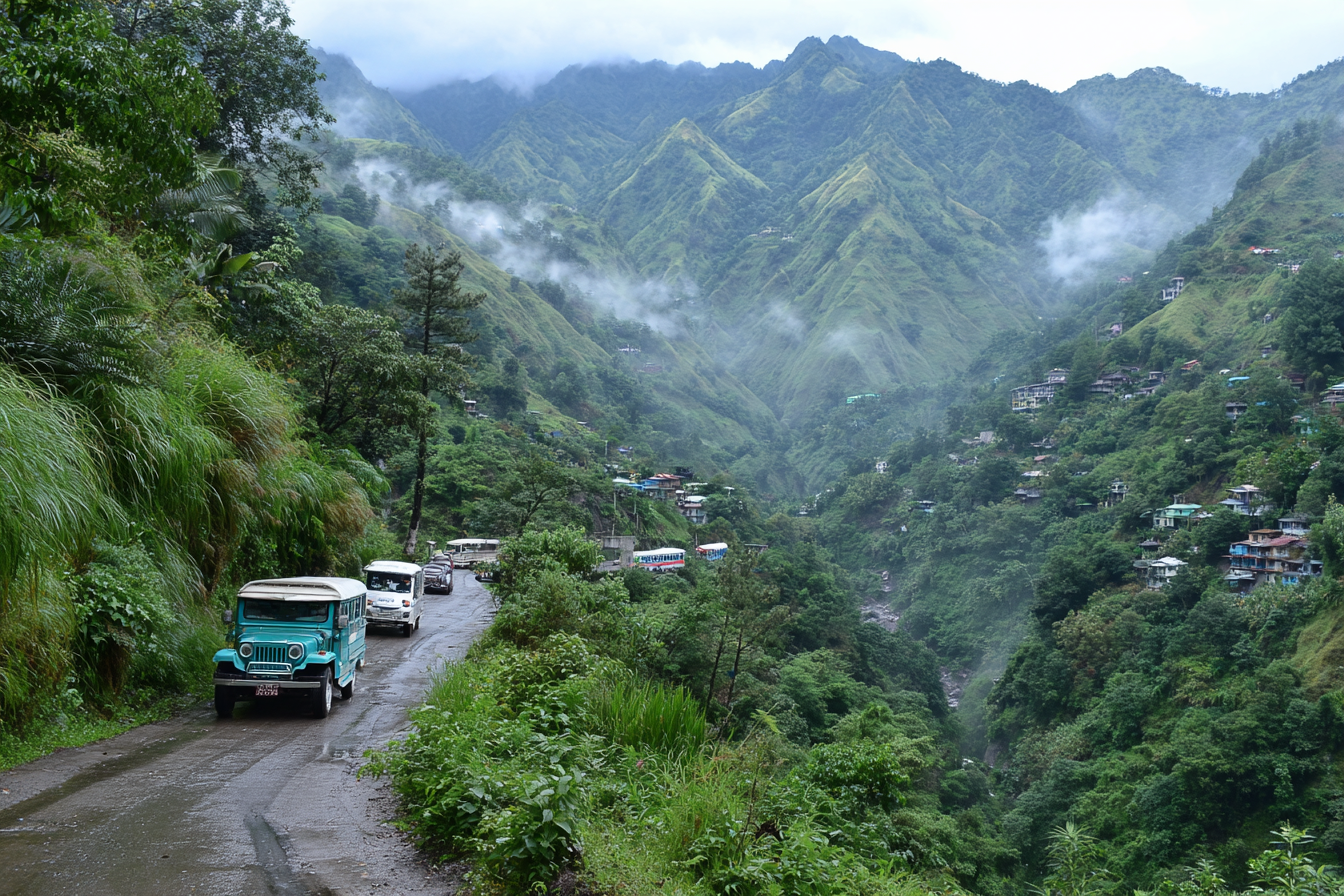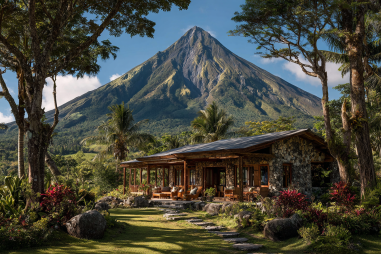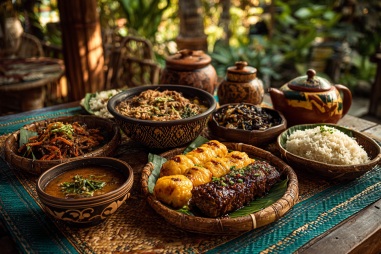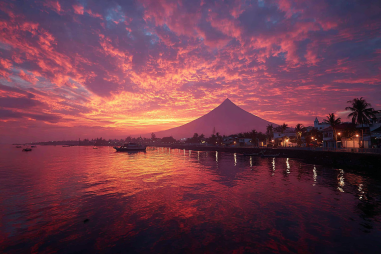Nestled in the mountainous region of the Philippines, Banaue is famous for its stunning rice terraces, which are often called the “Eighth Wonder of the World.” Traveling to and around Banaue offers a unique experience, blending adventure with the breathtaking natural beauty of the Cordillera mountains. Whether you’re coming from Manila, Baguio, or other nearby cities, understanding the transportation options available is essential to ensure a smooth and enjoyable trip. This guide will walk you through how to get to Banaue, local transport options, safety tips, and everything else you need to navigate this scenic destination.
How to Get to Banaue from Major Cities
Getting to Banaue is an adventure itself, given its mountainous location and relatively remote setting. Most travelers begin their journey from Manila, the capital of the Philippines. The trip from Manila to Banaue typically takes around 9 to 10 hours by road, depending on traffic and weather conditions. Buses bound for Banaue leave regularly from Manila’s bus terminals, such as the Cubao or Sampaloc terminals. Companies like Ohayami Trans and GL Trans offer direct routes, and tickets usually cost between 600 to 800 PHP ($11-$15 USD).
If you’re coming from other key areas, Baguio City—famous for its cool climate—is a logical stopover or starting point. The journey from Baguio to Banaue takes around 6 to 7 hours by bus or van, weaving through mountain roads with spectacular views. Vans leave frequently from Baguio’s bus terminals, providing a slightly faster and more flexible transport option.
While buses and vans are the most common modes of transport to Banaue, another option is renting a private vehicle or hiring a driver. This grants flexibility with your departure time and stops along the way, but it tends to be more expensive, especially for solo travelers or small groups.
Local Transport Types: Jeepneys, Tricycles, Vans
Once in Banaue, getting around involves experiencing local transport modes that are both practical and part of the local culture. Here are the most common:
- Jeepneys: The quintessential Filipino transport, jeepneys are colorful shared vehicles that run on fixed routes. In Banaue, jeepneys serve short distances within town or to neighboring villages. They are incredibly budget-friendly, costing just a few pesos per ride.
- Tricycles: Tricycles are motorcycles with sidecars and are the most versatile mode for short trips, especially across rougher or narrow roads where larger vehicles might have trouble. They are perfect for reaching local markets, drop-off points for trekking trails, or small nearby communities. Expect to negotiate fares, which generally range from 20 to 50 PHP within town limits.
- Vans (UV Express): Vans often serve routes between Banaue, nearby towns, and sometimes deeper into the rice terraces or tourist spots. Vans provide a more comfortable and direct ride but take more limited routes compared to jeepneys and tricycles.
These local transportation options provide an authentic way to interact with the residents and explore the surroundings at a relaxed pace.
Renting Vehicles vs. Guided Tours
For visitors looking to explore the extensive Banaue rice terraces and other attractions like Batad or Bangaan, there are two main approaches to transportation: renting a vehicle or joining guided tours.
Renting Vehicles: Adventurous travelers may choose to rent motorcycles or even 4×4 vehicles. Renting a motorcycle can cost around 500 to 800 PHP per day, while hiring a 4×4 vehicle with a driver might range from 3,000 to 5,000 PHP for a day trip. This gives you full control of your itinerary, but keep in mind the road conditions can be challenging, and local driving requires caution.
Guided Tours: Many local operators offer guided tours that combine transportation, guiding services, and trekking. This is an excellent option for those unfamiliar with the area or who prefer the convenience and enriched experience of a knowledgeable guide. Tour prices vary widely but generally start at approximately 1,500 PHP per person for half-day tours and go up for multi-day packages. Guided tours often include visits to multiple terraces, cultural immersion with indigenous villagers, and sometimes local meals.
Choosing between renting a vehicle or joining a guided tour depends largely on your budget, itinerary flexibility, and comfort with driving in mountainous terrain.
Road Conditions and Travel Safety
The mountainous roads leading to and within Banaue are known for their scenic beauty but also for their winding and sometimes narrow paths. Most of the main roads leading to Banaue are paved or semi-paved, but secondary roads, especially those heading towards more remote terraces like Batad, are rougher and can be unsuitable for standard vehicles.
Travel safety considerations include:
- Driving cautiously during rainy seasons, as landslides and slippery roads can pose hazards.
- Allowing extra travel time, especially during early mornings or late afternoons when fog may reduce visibility.
- Using vehicles operated by experienced local drivers who know the terrain well.
- Ensuring your mobile phone has adequate signal or carrying offline maps since connectivity can be patchy.
For trekking routes, wearing proper hiking shoes, carrying enough water, and having a local guide are highly recommended to ensure safety.
Travel Times and Booking Tips
Planning your travel time carefully can make your visit to Banaue more enjoyable and less stressful. Generally, buses and vans operate early in the morning to maximize daylight travel. For example, the Manila to Banaue bus departs between 8 PM and midnight the day before to arrive early morning, allowing one to start exploring right away.
Booking your transportation ahead of time, especially in peak seasons (December to February and Holy Week), is crucial to avoid last-minute hassles. You can reserve bus tickets online or through travel agencies, and vans can sometimes be booked through hotels or local operators.
If you plan on hiring guides or joining tours, many can be booked once in Banaue town, but reserving earlier via online platforms or your accommodation ensures availability and sometimes better deals.
Navigating Trekking Routes
Banaue is not just a destination but a gateway to some of the most famous trekking routes in the Philippines. The famous Banaue rice terraces are relatively accessible by jeepney or tricycle, but to reach more remote terraces such as Batad and Bangaan, trekking is the best way to immerse yourself in the scenery and local culture.
Many trekking routes start from Banaue town or neighboring villages and can range from a few hours to a full day, depending on the destination. Hiring local guides is highly encouraged, as they provide invaluable knowledge about the terraces and the indigenous Ifugao culture, and ensure safe passage through the mountain trails.
When preparing for trekking:
- Wear sturdy hiking shoes or boots.
- Bring sun protection, insect repellent, and sufficient water and snacks.
- Keep your pace steady to enjoy the environment without overexertion.
- Respect local customs and communities along the routes.
Finding the Best Transport for Your Banaue Adventure
Choosing the right transportation for your Banaue trip depends on your preferences, budget, and travel style. If you prefer convenience and a guided experience, booking a tour or hiring a local driver is ideal. For budget-conscious travelers eager to immerse themselves in local life, using jeepneys and tricycles offers an authentic touch.
Regardless of how you get around, the journey through Banaue and its surrounding terraces is a rewarding exploration of natural beauty and cultural heritage. With a bit of planning and an open mind, navigating this mountainous paradise will undoubtedly become a memorable highlight of your Philippine adventure.







